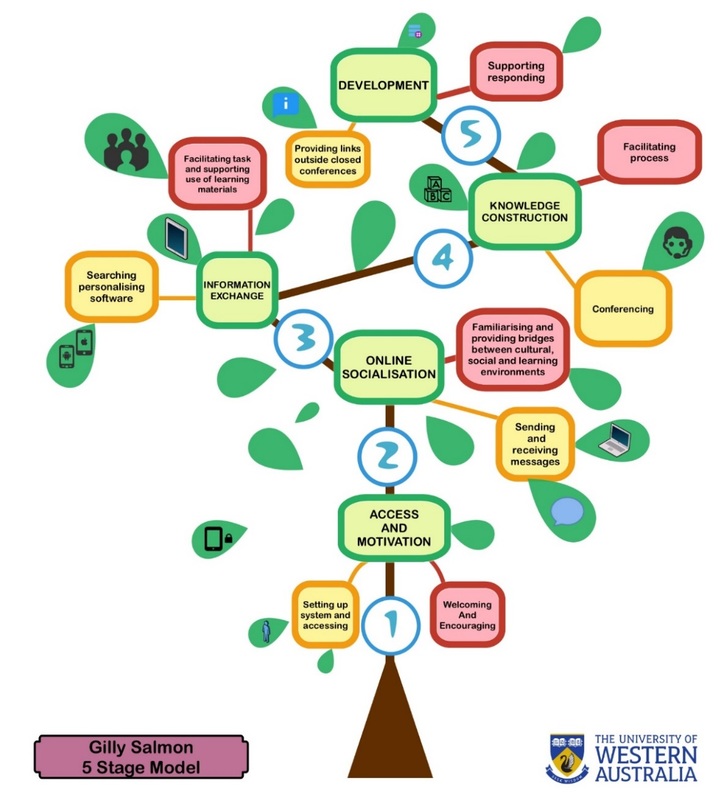 Salmon, Gilly. https://www.gillysalmon.com/five-stage-model.html
Salmon, Gilly. https://www.gillysalmon.com/five-stage-model.html
During the past two weeks we have divid deeper into online learning and how to plan it. Until now have talked about more abstract level what is online learning and collaborative learning but in this topic we had to get more concrete in the terms of what does it all mean.
In the beginning of this topic I did the “Community of Inquiry Educator Survey” to reflect my own teaching practicies. It was really interesting to see which questions are being asked because maybe that reflects a little bit of the values of online learning and what would be appreciated in succesful (online) teaching. It was really hard to answer the questions because sometimes (or most of the times) at least I tend to underestimate my own accomplishments. Since the courses I teach in are taught and planned collaborative with my collagues it was easier to give assess the teaching and give the compliments it should have. At the moment, I’m not teaching any online courses so I had to answer based on the blended teaching.
To think about online learning and course planning I found The Five Stage Model by Gilly Salmon really useful. I like it because it in the first glance seems very simple but it actually contains various different and quite big themes. I think that the first two steps are crucial and they have an affect on the whole learning experience. Creating a sound foundation by planning the course to be accessible and motivating is quite demanding and requires a lot of thought. After that supporting the socialization is something you can and must plan but also you need to be very sensitive in noticing what is happening in the group. In general, I get better contact to other people in the face-to-face situations, but in online environment you really need to plan and activate students a lot and in different ways.
Marti Cleveland-Innes (video, 2019) stated that “Emotion is present, even online”. I couldn’t agree more. In online learning it is really important that the learner is comfortable using the tools needed. Otherwise there might be more negative feelings, such as frustration, towards the technology and towards online learning. Giving time to think applies her, too. Giving and resourcing time to learn all the tools needed in the online course belongs to that first phase of accessibility and motivation by Gilly Salmon. In this ONL course I found it really helpful to have an orientational part in the beginning of the journey and having the institutional instructor confirming if I’m really on board. Without that I might have missed the whole journey.
Resources:
Cleveland-Innes, M. (2019). Emotion and learning – emotional presence in the Community of Inquiry framework (CoI)? Introductory video on the Padlet
Salmon, Gilly. The Five Stage Model. https://www.gillysalmon.com/five-stage-model.html